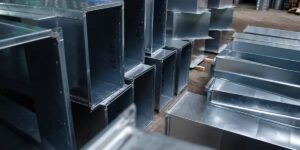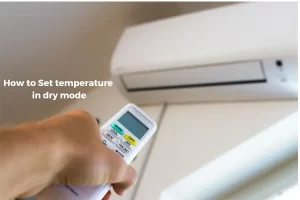Furnaces are of many types, each having a unique working. An electric furnace is a unique piece of machinery, and you may not fully comprehend how it works to heat your home. An electric furnace operates similarly to a hair dryer. It draws in air and passes it through a heat exchanger. An electric heating element heats the air in the heat exchanger. A fan forces this warm air into your home’s duct system, where it is distributed throughout the rooms.
Are you still confused about the working of an electric furnace? This blog post explains how electric furnaces work and contrasts them with the most popular alternative, the gas furnace to help you understand better.
Table of Contents
ToggleAlso check: 4 Signs of a Furnace Gas Leak
How Does The Furnace Operate?
To understand “How does an Electric Furnace work?” we must first understand “How does a furnace work?”
The issue can potentially worsen from the earliest campfires to today’s central heating systems. One of the most fundamental principles of thermodynamics is that temperature can be transferred.
When you place a kettle on an electric furnace, the heat from the furnace is transferred to the kettle. This transfers heat to the water, causing it to boil and become tea. If the tea is too hot, add some ice. Frozen water and hot tea exchange heat, making the ice cubes and the tea cooler warmer (i.e., melting).
The heating system operates in the same manner. You can transfer heat to the air and distribute it throughout the room by creating heat spots and directing or passing air through them. Smoke and ash are produced by campfires and wood furnaces, implying that some heat by-products are not safe to breathe, but modern heating systems use heated air as a heat source.
Aside from the smoke hazard, wood furnaces are ineffective at heating large areas. Nothing. This means that the warmed air may not reach the desired room.
Fortunately, modern furnaces address both issues.
How Does An Electric Furnace Work?
Electric or gas furnaces generate heat using the same principles outlined above. When the thermostat detects the temperature falling below a certain threshold, it instructs the furnace to begin heating. The heating element in the furnace then kicks in and generates heat. An electric motor pulls cold air in from the outside. This air circulates around or through the heating element. The heated air is then blown back into the room via ducts by a recirculation system.
This basic principle applies to all furnaces, but let’s take a closer look at electric furnaces.
The heater element is activated when the thermostat sends a “too cold” signal to the electric heater. A tightly wound coil of wire, similar to that found in a toaster furnace, serves as the heating element. When a current is passed through these coils, they heat up due to their resistance. The greater the heat required, the more elements must be activated.
The motor is operational. A fan system draws cool outside air into the furnace via a filter. Filters are useful because they collect dust and other particles. The air is then directed directly over the heating element, where heat is produced. A blower directs air from the furnace into the ducts and throughout the home. Because there are no dangerous parts on the heating element, air can safely flow directly over it.
Gas furnaces are similar to the basic concepts described above, but there are some additional steps. Electric furnaces generate heat using electric heating elements, whereas gas furnaces generate heat using natural gas that is ignited in a combustion chamber. Combustion requires fresh air but emits toxic by-products like carbon monoxide. This should be kept apart from the air delivered to your home.
A gas furnace, as opposed to an electric furnace, must have two streams of air: cool air in and warm air out.
- The process of bringing in cold air, warming it, and distributing it throughout the house.
- The flow of air enters the combustion chamber and exits as exhaust gas.
This means that not only must the heating elements be blown with clean air, but they must also be kept separate by passing the heat normally produced by the combustion process.
Also check: How Often Should Furnace Cycle?
Because of the added complexity, gas furnaces are typically larger than electric furnaces, making installation more difficult. Gas furnaces pose additional dangers. An explosion can introduce the deadly gas carbon monoxide into the heating system if the chamber is not properly sealed or wears out over time. As a result, if you have a gas furnace, you should have a carbon monoxide detector.
However, because the cost of gas is typically lower than the cost of electricity, gas furnaces are typically less expensive to operate. As a result, gas furnaces are particularly popular in cold climates. When temperatures drop, 24-hour heating is not only a convenience but a literal lifesaver. Whether you have a gas or electric furnace, it is critical to maintaining efficiency through proper maintenance and upkeep. Contact K2 Heating and Air Conditioning in Portland for installation or repair work.
FAQs
Is it a good idea to install an electric furnace?
They may be more efficient and less expensive to buy and install than a gas furnace. When selecting an electric furnace, remember that electricity is almost always more expensive than natural gas, which means you’ll pay more for the same heat you require in your home.
Is a chimney required for an electric furnace?
A vent, flue, or chimney is not required for an electric fireplace. Because an electric fireplace lacks a real flame, it produces no byproducts such as smoke or harmful gases. An electric fireplace does not require venting because no fuel is burned, and there is no combustion.
How much does a monthly electric furnace cost?
An electric furnace costs $130 to $180 per month to operate, or $1,600 to $2,200 per year.
Can an electric furnace be used to heat a house?
Yes, an electric furnace is capable of keeping your home warm. When considering an electric furnace, keep in mind that it is more expensive to heat a home with an electric furnace than with a natural gas furnace.
Is a cold air return required for an electric furnace?
Without a sufficient supply of return air, no furnace can function properly. A furnace can be compared to a lung. It ‘breathes’ hot air and inhales cold air. The ‘inhale’ process necessitates the use of air return vents.
How an electric furnace generates heat?
When the thermostat signals for heat, an electric current flows through the heating coils, heating them to extreme temperatures. As the furnace’s blower motor pushes air over the heating coils, the air warms, and the temperature inside your home rises.





















